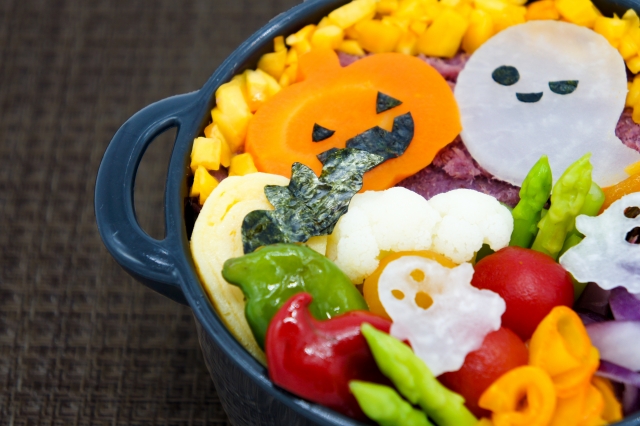日本人て凄い?海外の人が驚く!日本の素敵な料理6選!
引用元:© 2024 Kou’sKitchen
皆様、こんにちは!!元飲食店オーナーの41歳のKou’sKitchenです♪
食に関する雑学や知識を配信していけたらと思います★
このチャンネルは、
「料理は苦手だなー、時間が無いなー、節約したいなー」と思っている皆様へ
失敗しないように、出来るだけ簡単に更に本格的に出来るようを
目指して投稿しております☺
料理研究家を名乗れる様、日々精進中です!
宜しければ、高評価&チャンネル登録をして頂けると幸いです!
YOUTUBU&INSTAGRAM
卵焼き
卵焼きの起源は平安時代まで遡ると言われている作り方はシンプルだが熟練の技術が必要。
「卵焼き」と「玉子焼き」、一般的に使用されるのは「玉子焼き」となります。なぜならば「卵」はあの殻のついた生の状態のものを指す場合に使用され、「玉子」は
手を加えられた料理を指すことが多い
寿司
味と美しさは世界的評価が高い日本の職人には敵わないと高評価
寿司の語源は味が酸っぱいことから『酸し』が変化したらしい
現存する最古の寿司屋さんは奈良県にある『つるべすし弥助』さんが創業800年を
超える現存する最古のお寿司屋さんらしい
キャラ弁当
そのクオリティーの高さに海外の方は驚愕
海外では日本の食文化の一つ
海外では「Bento」として日本の弁当の認知度が上がっています
弁当が海外で広まったきっかけは日本のアニメ
飴細工
江戸時代から続く職人技無しでは作れないもはや綺麗過ぎて食べれないと日本人も感動
奈良の正倉院に収められている古文書の記載に、飴をさしていると思われる
「阿米(あめ)」という文字があるそうです。ちょうど奈良時代が始まった頃に重なります
神武天皇が、水飴を皆に振舞えば天下は丸く治まるといわれたように
甘いものには人を笑顔にする効果があります
茶菓子
茶菓子の起源は鎌倉時代だと言われている繊細で綺麗な上に美味しいは反則と高評価
大福は室町時代頃までは、鶉餅(うずらもち)と呼ばれるうっすら塩味の丸い餅でした。
お菓子というより食事といった感じで、腹持ちがよいため「腹太餅(はらぶともち)」などと呼ばれていたらしい
これが江戸中期に差し掛かった頃、江戸・小石川に暮らすおたよ(お玉との説も)という
女性が、甘いあんこを餅で包んだ腹太餅を売り出しました。
「大腹餅(だいふくもち)」と呼ばれるようになり、これが後に、よりよい文字を当てて「大福餅」と変化していったのたらしい
お節料理
平安時代の朝廷ではすでに食べられていた
その品数の多さとその美しさにビックリ
「おせち料理」は縁起が良いとされる食材を使った料理を重箱に詰めたもの
季節の変わり目(節日)に豊作の感謝を込めて、神様に収穫物をお供えした
「御節供(おせちく)」が由来と言われています。
江戸時代に入り「御節供」が庶民にも広まり、
江戸時代後期に一年で一番大切な節日・お正月に新年を祝って料理を食べるようになったと言われています。
おせち料理と並んでお正月には欠かせないお料理「お雑煮」
「お雑煮」という言葉は色々な具材を煮合わせた「煮雑(にまぜ)」からきています
翻訳 translation
Hello everyone!! I’m 41-year-old Kou’s Kitchen, a ♪ former restaurant owner
I would like ★ to distribute trivia and knowledge about food
This channel is available in the
For those of you who are thinking, “I’m not good at cooking, I don’t have time, I want to save money”
In order not to fail, I want to make it as easy as possible to make it more serious
I’m posting with the ☺ aim of
I am working hard every day to be able to call myself a culinary researcher!
If you like, I would appreciate it if you could give it a high rating & subscribe to the channel!
YOUTUBU&INSTAGRAM
Omelet
The origin of tamagoyaki is said to date back to the Heian period (794-1185).
Tamagoyaki” and “Tamagoyaki” are two different terms, and “Tamagoyaki” is the one commonly used. Because “tamago” is used to refer to the raw egg with its shell, while “tamago” is often used to refer to a dish that has been modified.
Sushi
Taste and beauty are highly acclaimed and unmatched by Japanese artisans, who have a worldwide reputation
The word “sushi” is said to have originated from “sanshi,” a change from “sour” because of its sour taste
The oldest existing sushi restaurant is “Tsurube Sushi Yasuke” in Nara Prefecture, which has been in business for over 800 years.
The oldest existing sushi restaurant is said to be “Tsurube Sushi Yasuke” in Nara Prefecture, which has been in business for more than 800 years.
Character bento
Foreigners are astonished at the high quality of these bento!
A part of Japanese food culture overseas
Japanese bento is gaining recognition overseas as “Bento
Bento became popular overseas because of Japanese anime
Amezaiku
Japanese people are impressed that they can no longer be made without the craftsmanship that has continued since the Edo period, and that they are too beautiful to eat.
An ancient document in the Shosoin Repository in Nara, Japan, which is believed to refer to candy, is said to contain the following words.
The word “Ame” is found in an ancient document in Nara’s Shosoin. This coincides with the beginning of the Nara Period (710-794).
Emperor Jinmu was said to have believed that if he served mizuame to everyone, all would be well under heaven.
Sweet things have the effect of making people smile.
Chagashi
Chagashi is said to have originated in the Kamakura period, and is highly regarded as foul and delicious on top of being delicate and beautiful.
Until around the Muromachi period (1333-1573), Daifuku was a round, slightly salty rice cake called Uzura-mochi.
It was more like a meal than a snack, and was called “harabutomochi” (rice cake with a fat belly) because it was good for a long time.
Around the middle of the Edo period, a woman named Otayo (some say Otama) who lived in the Koishikawa district of Edo (present-day Tokyo) began to make a sweet red bean paste cake with a sweet bean jam filling.
A woman named Otayo (some say her name was Otama), who lived in the Koishikawa area of Edo (present-day Tokyo), began selling a sweet red bean paste wrapped in a rice cake.
It is said that the name “daifuku mochi” was later changed to “daifuku mochi” with a better character.
Oseki-ryori
Oseki-ryori was already eaten at the Imperial Court during the Heian period (794-1185).
The number of items and their beauty are astonishing!
Osechi ryori” is a stacked box filled with dishes using ingredients believed to bring good luck.
Osechi ryori is an offering of harvests to the gods at the turn of the season (on set days) as a sign of thanksgiving for a good harvest.
It is said to have originated from “osechiku,” which was an offering of the harvest to the gods to express gratitude for a bountiful harvest at the turn of the season.
In the Edo period (1603-1867), “osechiku” spread to the general public,
In the late Edo period (1603-1867), people began to celebrate the New Year on the most important day of the year, New Year’s Day, by eating osechiku dishes.
Along with osechi cuisine, ozoni is an indispensable New Year’s dish.
The word “ozoni” comes from the word “ni-maze,” which means a mixture of various ingredients boiled together.
#japanesefood #簡単 #雑学 #おうちごはん #ダイエットレシピ #おうちカフェ #ワンパンレシピ #トリビア #時短レシピ #節約レシピ #グルメ #豆知識 #料理



コメント